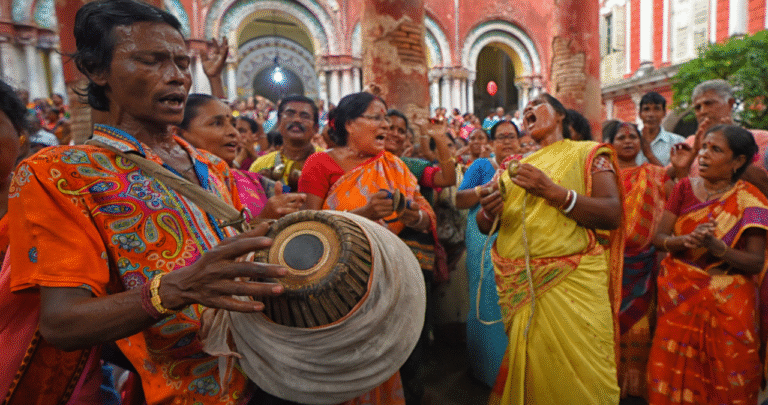
Photoackmpa
The term ‘photoackmpa‘ denotes a multifaceted concept that serves as a bridge between history and contemporary society. Derived from the convergence of photography and storytelling, it represents an evolving visual narrative that captivates audiences globally. The historical underpinnings of photoackmpa trace back to the early days of photography, where capturing images was not merely a technical pursuit but a philosophical endeavor, aiming to document the world and convey emotional truths. Over the years, the significance of photoackmpa has expanded, growing to encompass various artistic movements and cultural dialogues.
Throughout history, innovators like Ansel Adams and Dorothea Lange have utilized the power of photography as a means of social commentary, thereby establishing a precedent for the thematic exploration found in modern photoackmpa. Their work not only illustrated reality but sparked discourse about societal issues, prompting viewers to reflect on the imagery’s implications. Consequently, photoackmpa today represents a blend of artistic expression and activism, a dual purpose that continues to resonate with contemporary audiences.
In the current digital age, photoackmpa also embraces the advancements of technology and social media, allowing for instantaneous sharing and interaction. Platforms like Instagram serve as a modern-day extension of photoackmpa, enabling individuals to participate in visual storytelling in real-time. As we delve deeper into the various dimensions of this concept, it is essential to recognize how historical contexts and technological advancements have shaped its present understanding. By exploring these components, we can better appreciate the significance of photoackmpa in both historical and contemporary discourses.
Historical Background and Comparisons
The concept of Photoackmpa has evolved significantly since its inception, with roots that can be traced back to early photographic practices in the 19th century. Initially, photography was a scientific endeavor, characterized by a strong emphasis on realism and documentation. This period witnessed the birth of various photographic techniques, which laid the groundwork for the philosophical frameworks that constitute the Photoackmpa, as it intersects both art and technology.
As the medium developed, parallel movements emerged, contributing to the conceptual underpinnings of Photoackmpa. For instance, the pictorialist movement sought to elevate photography to the status of fine art, emphasizing emotional depth and artistic intention. This shift resulted in a divergence from strict representationalism, illustrating the early struggles between the mechanical and the artistic aspects of photography. Such ideological conflicts have directly influenced contemporary interpretations of Photoackmpa, producing a richer tapestry of thought concerning photographic authenticity and expression.
In the late 20th century, as digital technology became more accessible, the realm of Photoackmpa expanded even further. Artists began to experiment with new methods, effectively questioning traditional notions of authorship and image integrity. This digital revolution spurred dialogues around manipulated imagery and the potential for photos to serve as more than mere reflections of reality. Comparatively, one can draw parallels with other artistic movements that faced scrutiny over authenticity, including abstract expressionism and surrealism, which similarly grappled with the boundaries of reality and illusion.
Today, Photoackmpa represents a confluence of history, technology, and artistic exploration. By situating current photographic practices within this historical continuum, we gain valuable insights into how previous innovations and ideological shifts have shaped the contemporary landscape of photography. Understanding these historical dimensions enables a more profound appreciation of Photoackmpa as an evolving concept, reflecting ongoing dialogues about representation, identity, and creativity in the visual arts.
Character and Subject Analysis in Photoackmpa
The exploration of characters in Photoackmpa reveals a rich tapestry of traits and motivations that provide significant insights into both historical and contemporary contexts. Central figures in Photoackmpa often embody the socio-political struggles of their time, showcasing resilience and innovation in the face of adversity. This duality not only enhances individual significance but also serves as a lens through which one can examine the broader implications of their actions on society at large.
For instance, characters within this artistic tradition may represent various communities, each with distinct attributes relevant to cultural dialogues. Some may reflect the aspirations and challenges of marginalized groups, emphasizing themes of agency and identity. These characters often act as conduits for deeper messages, highlighting the impact of historical events on personal narratives within Photoackmpa. By engaging with their motivations—whether driven by a pursuit of freedom, justice, or self-expression—viewers can gain a more nuanced understanding of the complexities surrounding the medium.
Moreover, the motivations behind these characters frequently bridge historical circumstances with contemporary issues. As modern iterations of Photoackmpa arise, the figures depicted often resonate with today’s societal struggles, prompting reflections on ongoing inequalities or the quest for cultural acknowledgment. The dynamic interplay between character and context facilitates a thematic exploration that remains relevant across time. This analysis showcases how each character contributes not just to the storyline but also to the broader cultural critique inherent in Photoackmpa.
Ultimately, the characters within Photoackmpa are emblematic of larger themes regarding heritage, identity, and resistance. Their narratives engage audiences not only in historical contexts but also in ongoing conversations around social justice and representation in today’s world. This multifaceted analysis underscores the importance of recognizing these characters as pivotal components of both the past and the present, enriching the overall understanding of Photoackmpa.
Contemporary Relevance and Future Impact
In today’s multifaceted cultural landscape, the concept of Photoackmpa holds significant relevance. This significance stems from its rich artistic legacy and its ability to adapt to contemporary themes and narratives. The fusion of traditional elements with modern aesthetics not only captures the attention of diverse audiences but also enriches the dialogues surrounding identity, society, and technology. As educational institutions incorporate Photoackmpa into their curricula, students engage with its historical context and current implications, thus ensuring the art form remains a vital part of scholarly discourse.
Accessibility plays a pivotal role in the contemporary appreciation of Photoackmpa. With the advent of digital media, a wider audience can now experience Photoackmpa-related artworks through online galleries and social media platforms. This democratization of art fosters a global dialogue, allowing individuals, regardless of their background, to connect with Photoackmpa’s narratives. Furthermore, the ease of access encourages critical reception and discussion, stimulating an environment where contemporary artists can draw inspiration from this established art form while also innovating upon it.
The stylistic features of Photoackmpa, characterized by their unique blend of colors, forms, and techniques, contribute to the art’s enduring appeal. As artists experiment with these elements, they push traditional boundaries, ensuring that Photoackmpa evolves alongside contemporary artistic movements. This dynamism not only keeps the concept relevant but also establishes Photoackmpa as a cornerstone of future artistic exploration. Ultimately, the interplay of historical depth and modern interpretation signifies that Photoackmpa will continue to resonate, inspiring new generations of creators and audiences alike.




